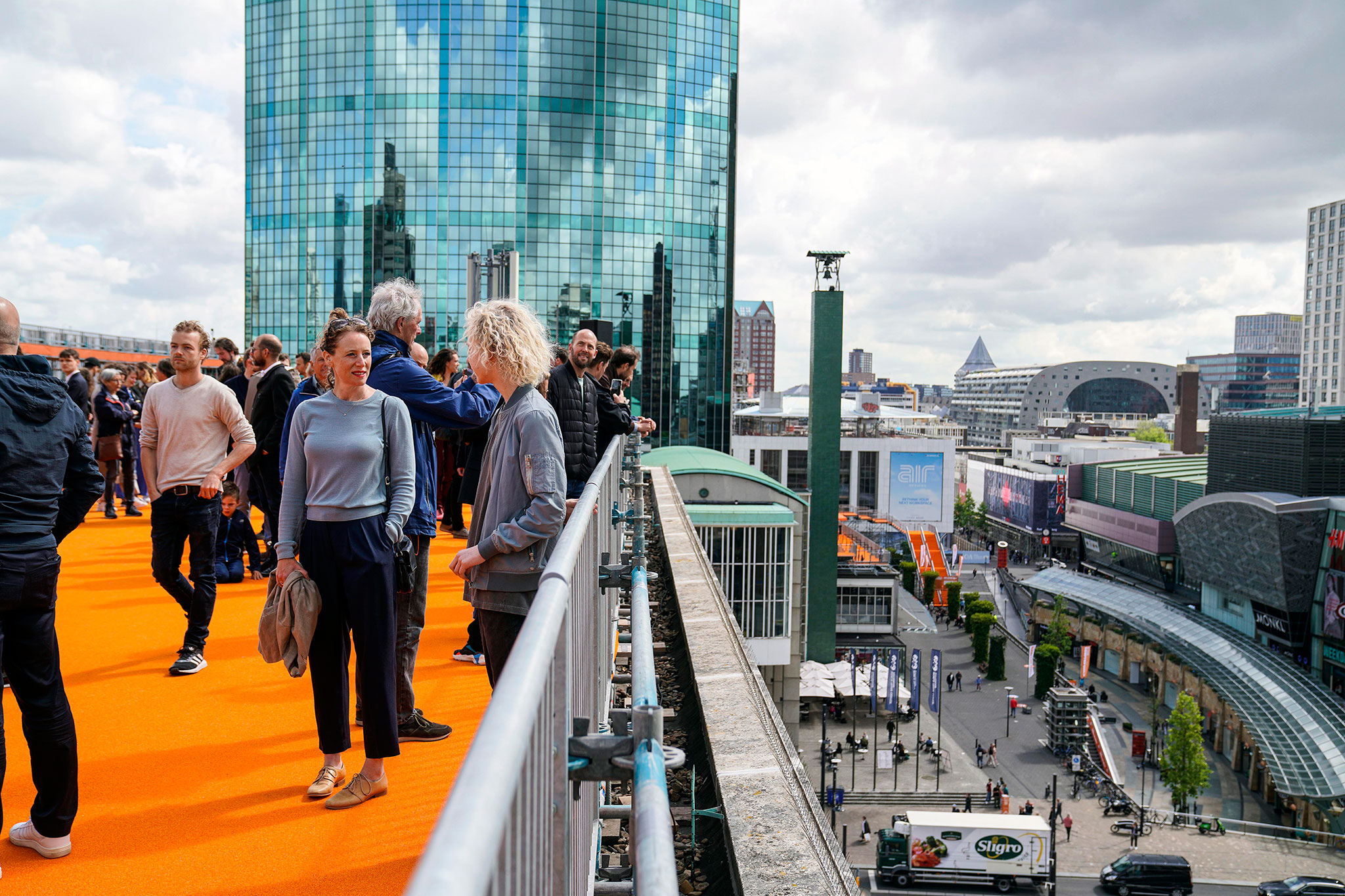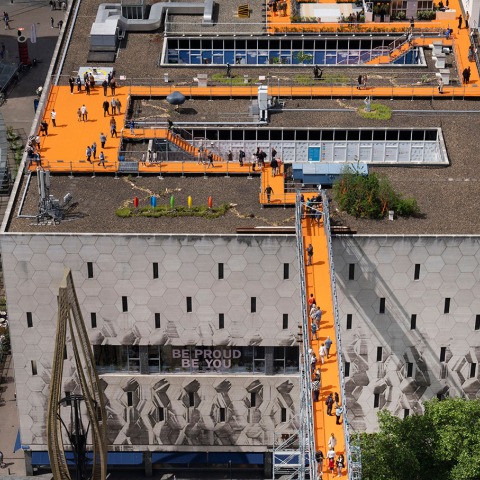The bright orange Rotterdam Rooftop Walk is 600 meters long and offers the public a fantastic view of the city for a month. In the rooftop exhibition, artists, designers, and architects show the possibilities if we use our roofs efficiently for vegetation, water storage, food production, and power generation. Rooftops are a second area that makes a city more habitable, sustainable and healthy.
Rooftop programming can help with major issues such as climate change, the housing crisis, and the transition to renewable energy; the Rooftop Walk draws attention to these problems – making visitors more aware of the possibilities, especially in a city like Rotterdam where 18.5 km² of flat roofs remains unused.
During the Eurovision Song Contest, the idea was to make a high stage to honour the winner, but that was cancelled due to the pandemic. I am glad that Rotterdam Rooftop Days have managed to achieve this, and I want to argue for a further sequel: we should not only occupy our roofs and make them greener but also connect them so that we can offer Rotterdammers a new rooftop park! For this, the orange carpet and the bridging of the Coolsingel are a nice initial test case.”

Rotterdam Rooftop Walk by MVRDV. Photograph by Frank Hanswijk

Rotterdam Rooftop Walk by MVRDV. Photograph by Frank Hanswijk
Description of project by MVRDV
Open for one month in which it plays a highlighted role in both Rotterdam Architecture Month and the Rotterdam Rooftop Festival, the Rotterdam Rooftop Walk allows visitors to venture across a variety of the city’s rooftops at a height of 30 metres. It aims to give the public a new perspective on the city: the extensive programming should increase visitors’ awareness of the potential of roofs, which can become a “second layer” that makes the city more liveable, biodiverse, sustainable, and healthy, while the highlight of the route is the bridge spanning the Coolsingel, one of Rotterdam’s most important streets.







































































